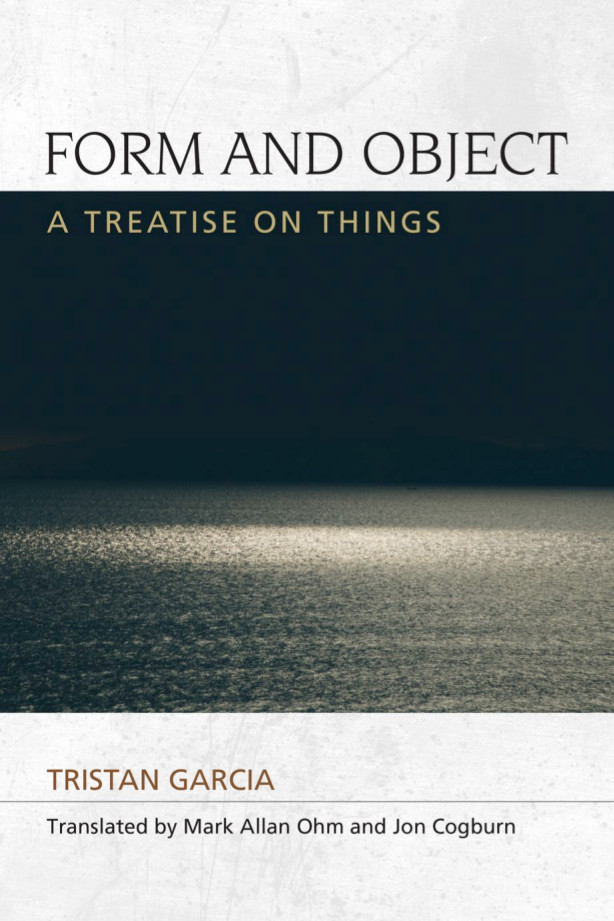Mario Perniola: The Sex Appeal of the Inorganic: Philosophies of Desire in the Modern World (2000/2004)
Filed under book | Tags: · cybersex, desire, philosophy, sex, sexuality, thing

“We live in a world where the one-time opposition between things and humans has been transformed, where the center of contemporary sensibility is the encounter between philosophy and sexuality, where sex extends well beyond both the act and the body. We live in a world where to be sexy is to ignore the distinctions between animate and inanimate objects of desire, where the aesthetics of sex are being revolutionized.
An organic sexuality, based on sex difference and driven by desire and pleasure, is being replaced by a neutral, inorganic and artificial sexuality, a sexuality always available but indifferent to beauty, age or form, a sexuality freed by thought from nature.
The Sex Appeal of the Inorganic takes the reader on a radical, new tour of Western philosophy-from Descartes, Kant and Hegel to Heidegger, Wittgenstein and Sartre-to reframe our understanding of personal experience and the aesthetic, to examine how, if we are to remember how to feel, we must become a thing who feels, we must think ourselves closer to the inorganic world and move further from our bodies.”
First published as Il sex appeal dell’inorganico, Einaudi, Torino, 2000.
Translated by Massimo Verdicchio
Publisher Continuum, London/New York, 2004
Athlone Contemporary European Thinkers series
ISBN 0826462448
vi+147 pages
Reviews: Stella Sandford (Radical Phil 2004), Farris Wahbeh (J Aesthetics & Art Criticism 2006), Patricia Marino (J Hist Sexuality 2010).
Interview with author (1996-97)
PDF (7 MB)
Comment (0)October, 155: A Questionnaire on Materialisms (2016)
Filed under survey | Tags: · actor-network theory, anthropocene, art, human, materialism, networks, object-oriented ontology, philosophy, speculative realism, subject, subjectivity, thing
“Recent philosophical tendencies of “Actor-Network Theory,” “Thing Theory,” “Object-Oriented Ontology,” “Speculative Realism,”and “Vibrant Materialism,” have profoundly challenged the centrality of subjectivity in the humanities and, arguably, the perspectives that theories of the subject from the psychoanalytic to the Foucauldian have afforded (on the operations of power, the production of difference, and the constitution of the social, for instance). At least four moves characterize these discourses:
• Attempting to think the reality of objects beyond human meanings and uses. This other reality is often rooted in “thingness” or an animate materiality.
• Asserting that humans and objects form networks or assemblages across which agency and even consciousness are distributed.
• Shifting from epistemology, in all of its relation to critique, to ontology, where the being of things is valued alongside that of persons.
• Situating modernity in geological time with the concept of the “Anthropocene,” an era defined by the destructive ecological effects of human industry.
Many artists and curators, particularly in the UK, Germany, and the United States, appear deeply influenced by this shift. Is it possible, or desirable, to decenter the human in discourse on art in particular? What is gained in the attempt, and what—or who—disappears from view? Is human difference—gender, race, power of all kinds—elided? What are the risks in assigning agency to objects; does it absolve us of responsibility, or offer a new platform for politics?” (from the introduction)
Responses by Emily Apter, Ed Atkins, Armen Avanessian, Bill Brown, Giuliana Bruno, Julia Bryan-Wilson, D. Graham Burnett, Mel Y. Chen, Andrew Cole, Christoph Cox, Suhail Malik, T. J. Demos, Jeff Dolven, David T. Doris, Helmut Draxler, Patricia Falguières, Peter Galison, Alexander R. Galloway, Rachel Haidu, Graham Harman, Camille Henrot, Brooke Holmes, Tim Ingold, Caroline A. Jones, Alex Kitnick, Sam Lewitt, Helen Molesworth, Alexander Nemerov, Michael Newman, Spyros Papapetros, Susanne Pfeffer, Gregor Quack, Charles Ray, Matthew Ritchie, André Rottmann, Amie Siegel, Kerstin Stakemeier, Artie Vierkant, McKenzie Wark, Eyal Weizman, Christopher S. Wood, and Zhang Ga.
Edited by David Joselit, Carrie Lambert-Beatty, and Hal Foster
Publisher MIT Press, Winter 2016
ISSN 0162-2870
108 pages
PDF (updated on 2017-11-24)
Comment (0)Tristan Garcia: Form and Object: A Treatise on Things (2011–)
Filed under book | Tags: · animal, art, being, body, culture, economy, event, evolution, form, gender, human, knowledge, life, metaphysics, nature, nothing, object, ontology, philosophy, relation, representation, self, thing, time, value

“What is a thing? What is an object? Tristan Garcia aims to overturn 100 years of Heideggerian orthodoxy about the supposedly derivative nature of objects to put forward a new theory of ontology that gives us new insights into the world and our place in it.
Garcia’s original and systematic formal ontology of things strips them of any determination, intensity or depth. From this radical ontological poverty, he develops encyclopaedic regional ontologies of objects. By covering topics as diverse as the universe, events, time, the living, animals, human beings, representation, arts and rules, culture, history, political economy, values, classes, genders, ages of life and death, he shows that speculative metaphysics and ontology are alive and well.”
First published as Forme et objet. Un traité des choses, PUF, Paris, 2011.
Translated by Jon Cogburn and Mark Allan Ohm
Publisher Edinburgh University Press, 2014
ISBN 0748681493, 9780748681495
462 pages
On Graham Harman’s System and My Own by Garcia (2013), Harman’s response.
Interviews with Garcia: by Liam Jones (Figure/Ground, 2014), Philosophical Readings (2014).
Reviews and commentaries: Jean-Clet Martin (2012, FR, ES), Harman (Continent, 2012), Nathan Brown (Radical Philosophy, 2014).
Wikipedia (FR)
Publisher
WorldCat
PDF, PDF (updated on 2018-5-8)
Comment (0)
